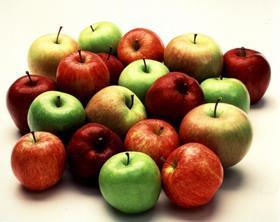
This year’s apple export crop from the Southern Hemisphere is forecast to increase by roughly 8 per cent to just under 2m tonnes, according to predictions from Chile-based fruit analyst Decofrut, thanks to increases in volume in all producer countries apart from Brazil and Australia.
Chile
Chilean apple exports are estimated to rise by 2 per cent rise this year to 858,171 tonnes, comparison with 841,827 tonnes in 2010, according to Decofrut. In the pear category, exports should reach 118,000 tonnes, which translates into a 4 per cent rise on last year.
“The weather conditions during the Chilean winter prompted good expectations for the apple and pear crops this year, which is why a greater availability of volume is expected for production and exports,” Decofrut director Manuel Alcaíno told Fruitnet.com.
“However, during October and November climatic conditions – such as hailstorms, frosts and rains – associated with the weather phenomenon La Niña affected the central zone of Chile, which has adjusted the final projections.”
South Africa
In 2011, Decofrut expects South African apple production will increase which will lead to a 8 per cent rise in export volume to 320,135 tonnes (or 25.6m (12.5kg) cartons. This represents a recovery from the 11 per cent fall in sendings last year.
However, the strong appreciation of the South African rand against the US dollar will have the unfavourable effect of de-incentivising exports and hampering competitiveness, Decofrut said, which could result in fewer exports than initially predicted.
New Zealand & Australia
According to the USDA New Zealand apple export will rise by 12 per cent this year to 287,500 tonnes. Australian volume, meanwhile, will fall slightly by 2 per cent to around 4,200 tonnes. However, the recent severe flooding in Australia could further reduce the export volume this year.
Argentina
Argentinean apple production will increase by 18.5 per cent in 2010 with exports rising by 17 per cent to 211,233 tonnes, according to Decofrut. This growth marks a recovery (thanks to the absence of spring frosts) from the significant fall in exports last year when volume fell by 19 per cent.
“The principal increase in volume will be for the Granny Smith variety (up 31 per cent), followed by Pink Lady and Cripps Pink (up 25 per cent),” said Mr Alcaíno. 'Fruit sizes are expected to be large on average in comparison to 2010 with good quality in general and better than last year. The crop should also be on time this year with a five to seven-day head-start in some production areas.'
Brazil
Brazilian apple production is predicted to contract by approximately 22 per cent in 2011 because of frosts, rains and hail in the post-flowering period. Decofrut said that preliminary figures suggest exports will be down by 45 per cent to a volume of around 50,000 tonnes.
“The percentage of apples which remain on the local market continues to increase which means overseas exports this season could be the lowest of the last few years,” explained Mr Alcaíno.
“Furthermore, the strong appreciation of the Brazilian real against the US dollar will affect the apple industry by making exports less competitive. Meanwhile, the final export volume will depend largely on prices achieved on the internal market.”
Variety-wise, Decofrut expects the greatest fall in Brazil’s apple crop will be in the Fuji category (estimated to be down 39 per cent on 2010), due to an “off” year following the large crop of 429,560 tonnes in 2009. Gala volume will also be down by 14 per cent.
Uruguay
Apple production in Uruguay is this year anticipated to rise by 33 per cent to 69,350 tonnes, of which approximately 2,800 tonnes is expected to be of export quality, according to preliminary government estimates reported in local newspaper El País.
The bi-colored varieties Cripps Pink, Fuji and Granny Smith varieties will reportedly drive this increase in production, while red apples are expected to show little change from last season.
Conversely, the pear crop is forecast to contract by almost 20 per cent to 15,017 tonnes, against 18,702 tonnes in 2010, according to the report. Of that total, about 2,800 tonnes are set to be of export quality.



